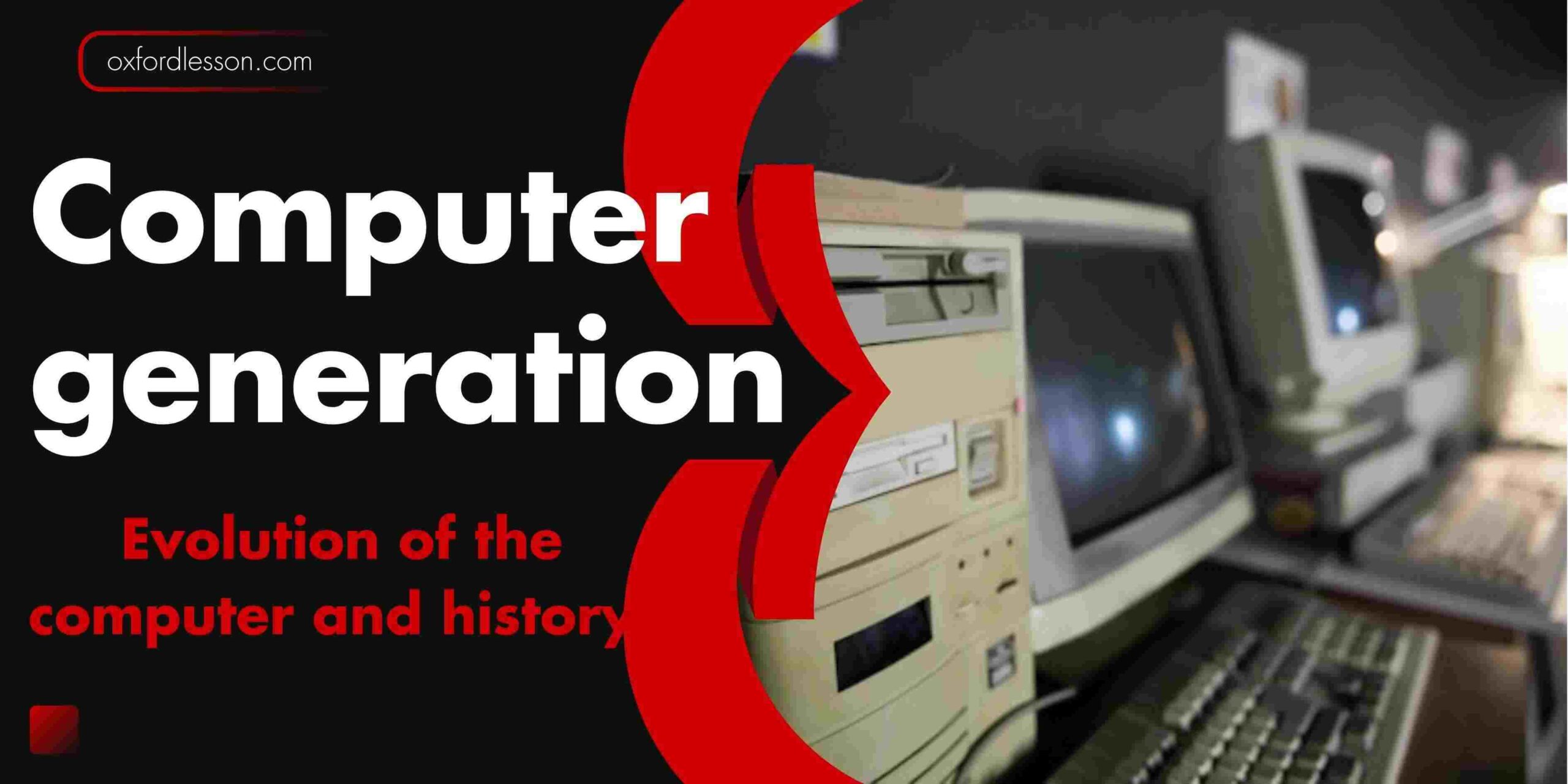What is computer generation? With modern technology, significant changes have been made to the computer hardware and software. This transformation can be divided into five stages, and we will discuss them one by one. Did you know of the main features of one of them what are the characteristics of different generations? Clarify these key points and gain knowledge about computer generation. In recent history, the computer is one of the best inventions in the world. I think that before starting, you should learn about the computer system. You should know the computer generation. If you are a student, you should know how this wonderful machine has evolved over the centuries.
As its name implies, the computer is a device that computing calculations. Somewhere, I see that a computer is a device that stores and processes data. Counting and adding aids → Manual calculators → Mechanical calculators → Programmable calculators → Programmable and inter-connectable computers. Referring to this table, understand how their technologies and transforming to a higher level of technology.
| Time | Inventors | Device name |
| 3000 BC | Babylonians | Abacus |
| 1200 AD | Unknown | Chinese abacus |
| 1600 | Unknown | Japanese abacus |
| 1600 | John Napier | Napier’s Bones |
| 1621 | William Oughtred | Slide Rule |
| 1623 | Wilhelm Schickard | Schickard’sCalculator |
| 1801-1804 | Joseph Jacquard | Jacquard Loom |
| 1820 | Thomas de Colmar | De Colmar’s Arithometer |
| 1822-1833 | Charles Babbage | Difference Engine |
| 1834 | Charles Babbage | Analytical Engine |
Here is the computer generation and how they are evolving at the time, with major technology shifts:
| Generation | Time range | Key Technology | Properties | Examples |
| 1st Generation | 1940s–1956s | Vacuum tubes | large size, and high cost. | ENIAC, UNIVAC |
| 2nd Generation | 1956s–1963s | Transistors | Smaller and faster | IBM 1401 |
| 3rd Generation | 1964s–1971s | Integrated Circuits (ICs) | further reducing size and faster speed | IBM System/360 |
| 4th Generation | 1971s–present | Microprocessors | large size and high cost. | Intel 4004, modern PCs |
| 5th Generation | present and beyond | AI, Quantum Computing | Focus on AI | Personal computer and the internet |
The summary of this table is that each generation of computers is smaller, faster, cheaper, and more powerful. Now we will discuss each computer generation in more detail.
First Computer generation
Vacuum tube and Electromechanical relay systems, these two switching systems have undergone a huge and excellent change in computer technology(It works as blocking or allowing electrical current). But, they generated lots of heat and frequently burned out. Here are the Key features of the first computer generation:
| Feature | Details |
| Technology | Vacuum tubes and magnetic drums |
| Speed | Very slow |
| Programming | Machine language |
| Cost | Extremely expensive |
| Storage | Magnetic drums |
Second Computer generation
The vacuum tubes were replaced with transistors. In these machines, memory improves the higher processing speed. Second-generation computers were reliable, generated less heat, were smaller in size, and consumed less electrical power than first-generation computers. At that time, a greater demand for this type of computer and inventors and manufacturers to improve the technology more and more. Key features of second-generation computers:
| Feature | Details |
| Technology | Transistors and magnetic core memory |
| Speed | microseconds per operation |
| Programming Language | FORTRAN, COBOL |
| Cost | Cheaper than 1st-gen computers |
| Storage | Magnetic tapes and disks |
Third Computer generation
The inventors considered and continued investigating more on the two concepts of microelectronics and digital electronics. In this generation, the transistor systems were replaced with integrated circuits. Did you know? Hundreds of transistors are used to form integrated circuits. End result of these, computers are much smaller, faster, cheaper, and more reliable than before. However, I like to mention a few disadvantages of third-generation computers: Still Expensive for individuals, need skilled technicians for operating and limited in graphics(text-based interface). Key features of 3rd generation computers:
| Feature | Details |
| Technology | Integrated Circuits |
| Speed | Nanoseconds per operation |
| Programming Language | COBOL, FORTRAN, BASIC |
| Cost | affordable for smaller businesses and some universities |
| Storage | Semiconductor memory |
Fourth Computer Generation
The first family of microcomputers was invented in the mid-1970s based on microprocessors of very large-scale integrated circuits. One of the disadvantages of this generation, needs the latest technologies to manufacture the microprocessors. Key features of fourth-generation computers:
| Feature | Details |
| Technology | Microprocessors |
| Speed | Nanoseconds to picoseconds per operation |
| Programming Language | C, C++, Java, Python |
| Cost | Affordable for individuals |
| Storage | RAM, ROM, SSDS |
Important information for 4th generation computers :
| Time | Inventor | Device name |
| 1971 | Ted Hoff (INTEL) | Intel 4004 |
| 1978 | Steve Wozniak and Steve Jobs | Apple II |
| 1981 | IBM | IBM PC (DOS) |
| 1984 | Apple Computer | Macintosh |
Fifth Computer Generation
Generally, the fifth generation of computers started to develop in the 1980s. The goal of making this machine, it should be capable of understanding using natural language, learning and reasoning. Artificial intelligence (AI) is the most powerful tool of these machines. Intelligent computers can be able to thinking and make decisions using AI and logic programming. Scientists are still researching to develop quantum computing and optical computing. Very Large Scale Integration (VLSI) and later Ultra-Large Scale Integration (ULSI) are used for hardware components.
Upcoming and trending technologies such as natural language processing, machine learning, expert systems, and robotics use for designed to think and learn. These types of computers can understand and respond to human language, such as English, German, etc. In 1982 by Japan’s Ministry of International Trade and Industry (MITI) started a project to make fifth fifth-generation computer system. They use logic programming (Prologue) and AI, but this project failed.


